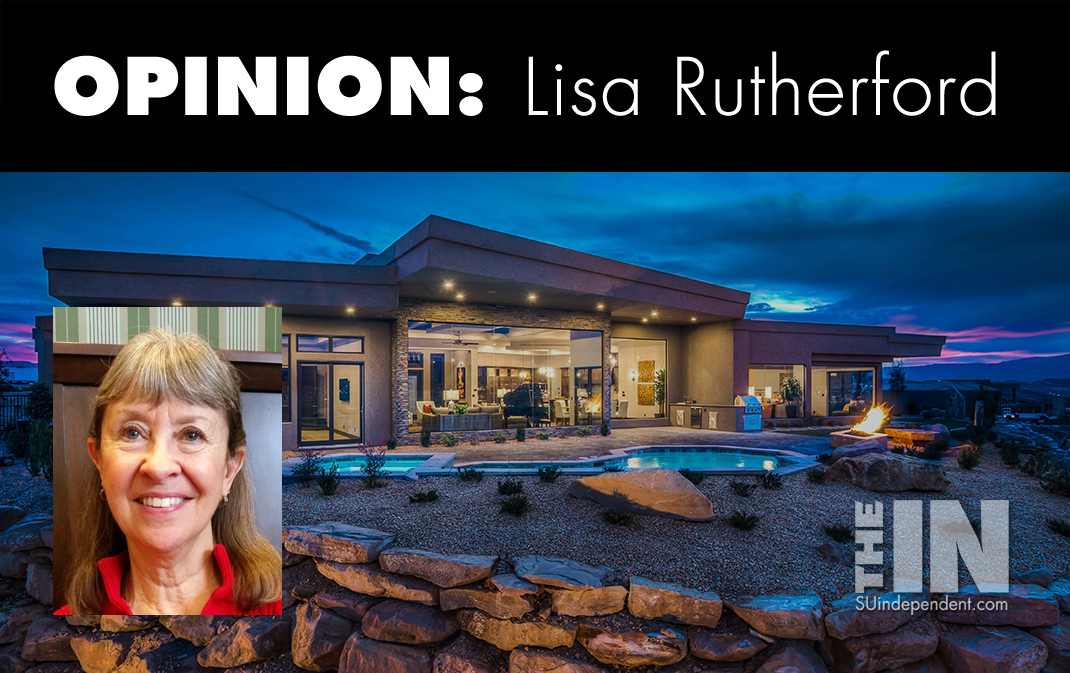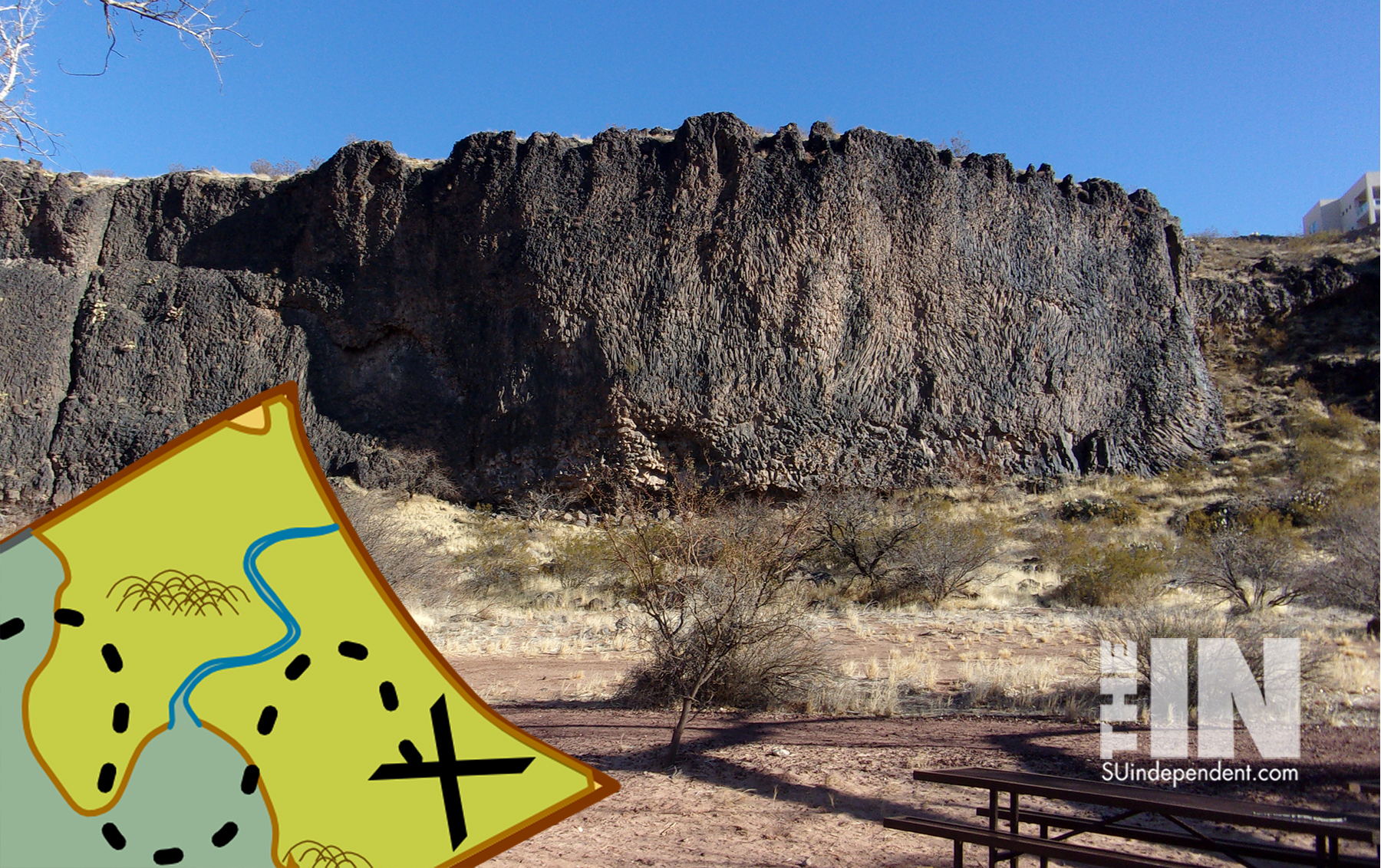
Home Size Adds To Climate Change And Personal Burden
– By Lisa Rutherford –
The annual St. George Parade of Home is upon us again, virtually this time. It used to be that there were some reasonably priced and sized homes on the list when I moved here in 2001. Now, the sizes and costs are in the stratosphere, with the “cost” prize going to one at $4.8 million with over 5,000 square feet. But there’s one at nearly 10,000 square feet you can get more cheaply. What a deal!
Some of these behemoths come with euphemistic names like “Bungalow” and “Cottage,” both at around $900,000—hard to believe, right? Where do these developers get the hubris to come up with names like that for such extravagance—extravagance that may not be costing the moneyed people who can afford them but is costing us all as a society? Many use their kids as an excuse for having a bigger home. But, what are those who insist on these homes leaving their kids? A big estate and a worn-out planet?
These examples are just the most expensive and most visible tip of an iceberg that’s been developing for decades. Apparently, “Lifestyles of the Rich and Famous,” a show syndicated from 1984 to 1995, was enough for many to see what they were missing. Since then, but even before, to be fair, the sizes of homes have been growing and putting a burden on resources. But what do we care about a livable planet as long as we have an expansive, well-appointed house in which to hide, right?
This trend to build bigger seems to be focused in the Southwest, where there’s lots of land on which to build. Many big cities are actually seeing a trend to smaller homes not only due to limited land but also due to price. But despite these smaller homes, condos, and apartments, people seem to be able to live there enjoyably.
I remember when I was growing up in the 50s. We had a modest home in Albuquerque, New Mexico, with three bedrooms, two bathrooms, kitchen, living room, dining room, utility room, garage, and eventually an added den at the back of the house. The house could not have been more than 1,000 to 1,200 square feet, but our family of six survived and thrived.
At the turn of the 21st Century, a tiny-home movement began in America, picked up after the 2008 crash and subsequent Great Recession, and has spread globally. These 100 to 400 square foot homes, about the same size as the typical hotel room, save on materials and energy. Now, I’m not saying we should all be living in a tiny home, but surely there’s somewhere between the average US home of 2,600 square feet and a tiny home that’s reasonable for humans and our planet. After all, people are living full time in RVs that are barely bigger than a tiny home and doing just fine.
Here’s the crux of the matter. The bigger the home, the bigger the carbon footprint. Building materials, energy to heat and cool, appliances, and stuff to fill the home—even with the new “minimalist” decor—cost our planet. All of the materials that go into building a home extract costs on the environment, and many are non-renewable. Even the new technology which is supposed to make homes energy efficient has not been able to keep up with size increases.
Twenty-two mature trees are needed for an average US home, and another twenty-two to twenty-four needed depending on how much wood is used inside the home, and trees take time to grow. With catastrophic wildfires now scorching the US annually, this will become more and more of a problem.
The Amazon Rainforest is the world’s leading source of lumber, but it is also considered the lungs of the earth because it produces about 6 percent of the world’s oxygen. It serves a huge role in our world’s climate.
With the average American’s annual carbon footprint being more than five times the global average, we have a lot of room for improvement. It doesn’t mean shrinking your life and being miserable. Downsizing can have psychological and financial benefits: less clutter, less area to clean, lower utility bills, more time for outdoors. We grow into what we have, and a University of Arizona study found that less buying actually makes us happier, even happier than switching to eco-friendly products.
The climate crisis threatens to displace many around the world from even the meager homes they currently have while we continue to build bigger and bigger to satisfy egos.
If I had it to do over again, I would not be in the 2,450-square foot home I have. The ceilings are too high, there’s too much to clean, and there’s just more room than needed. Had I been as aware twenty years ago as I am now of the real climate change issues, I hope I would have made a better decision. Others have that knowledge now.
Viewpoints and perspectives expressed throughout The Independent are those of the individual contributors. They do not necessarily reflect those held by the staff of The Independent or our advertising sponsors. Your comments, rebuttals, and contributions are welcome in accordance with our Terms of Service. Please be respectful and abide by our Community Rules. If you have privacy concerns you can view our Privacy Policy here. Thank you!
Click here to submit an article, guest opinion piece, or a Letter to the Editor





Lisa: How wholeheartedly I agree.
Where is the 1200 to 1500 square foot home on a 1/2 acre lot where your eave does not touch your neighbors and you look from your kitchen window to your neighbors bathroom (shades drawn you hope) for an stunted view.
Washington Fields has become an example of one type of urban living that is necessary today. Rather barren in a regimented ticky tacky sort of way.
An affordable neighborhood with a big backyard for the gardener and the kids swing set shaded by a cooling number of trees can be accomplished with careful attention to water consumption.
I hope St George won’t become another Vegas or L.A. heat sink.
I don’t think the Colorado River is going to help in the South West vision of growth for growths sake.
Oh. And the 3000 sq ft plus homes. When the carpenter shows up in a fifty thousand dollar work truck, you may have a clue why housing is getting more expensive.
Doug, thanks so much for your comment about my article. Lot sizes are going down and if people want these large homes they will definitely be butted up against their neighbor, which doesn’t seem that enjoyable. As for the heat sink issue, if we get rid of lawns but keep with trees, we can have an area that grows but doesn’t over use water and still keeps shade and the heat down. Your comment about the high-dollar work trucks does speak to the problem of housing costs, but then my understanding is that people are taking out long-term loans for vehicles. That’s another problem related to how money is used and climate change given the effects of these vehicles. Fortunately, GM and others are focusing on electric vehicles.